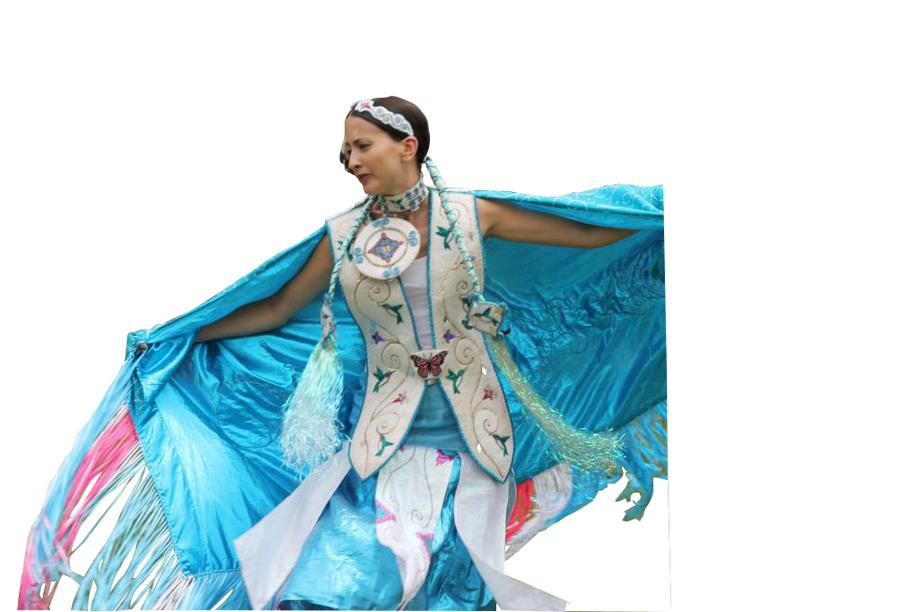
“Our culture is not static,’’ emcee Chris Newell said at the Harvard Pow Wow last week. Indeed, if any non-Natives had shown up expecting to see some kind of historical reenactment, a glance at the dancers making their way around the circle in neon beadwork, hologram fabric, and fluorescent ribbons would have quickly disabused them.
Spring is the start of powwow season, a circuit of intertribal Native American dance exhibitions/social gatherings that takes place across the country. The modern tradition has roots in the Wild West shows of the late 19th and early 20th centuries. At a time when Native culture was forcefully suppressed, these touring shows were a chance to break free, perform traditional dance, and travel the world. They also brought together Native people from many different nations, beginning an intertribal culture that bridged linguistic and ethnic divides.
Since then, powwow culture — and its regalia — has never stopped evolving. “Over the last half-century,’’ Indian Country writer Carol Berry wrote, “individuality has become important among increasingly fashion-conscious youth, and that trend may also have played a part in the rise of vibrant colors [and] shinier fabrics.’’
For example, at Harvard last weekend, Lakota citizen Jennifer Weston wore a handmade jingle dress covered in tinkling metal cones — like the original ones, first created by Ojibwa women in the 1920s, which used rolled-up tobacco can lids. But the rest of her dress was a deep blue, with lace covering orange inserts — not colors the first jingle dancers would have imagined wearing.
Other dancers mixed neon yellows and greens and metallic sequins with more traditional natural materials like feathers and porcupine quills. As with any kind of fashion, there are passionate disagreements: On powwow message boards, posters argue about trends. “It should be illegal to use neon for anything except accents,’’ one wrote on powwows.com. “Too much neon can leave you blind . . . It’s like looking into the sun . . . You know it’s wrong but you can’t help but look.’’
Another forum member disagreed. “I LOVE the Asian brocade fabrics and neon colors,’’ she wrote.
If critique is a sign of ongoing innovation, powwow regalia is an art form in full creative flux.
S.I. Rosenbaum can be reached at si@arrr.net.



